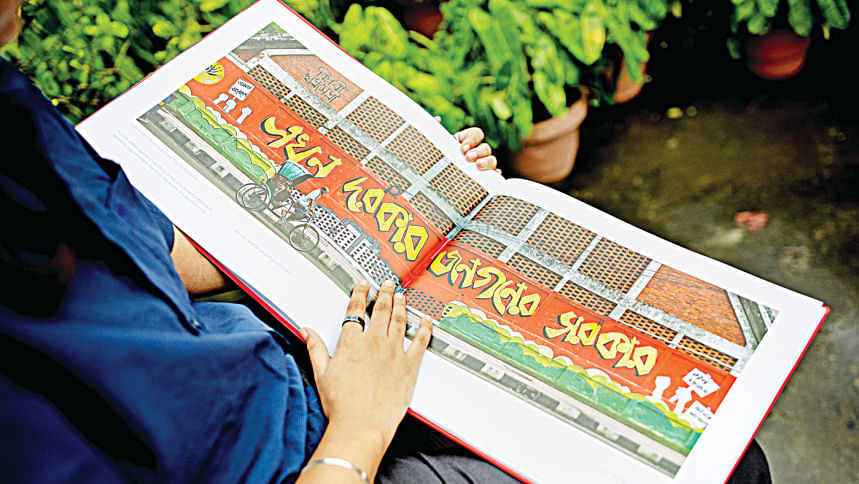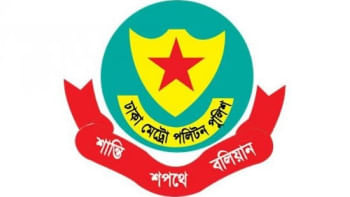Tracing an uprising in strokes

Graffiti has long played a powerful role in revolutions around the world. From the walls of Paris in 1968 to the slogans of the Arab Spring, street art has served as one of the most immediate and accessible forms of resistance. In times of unrest, when voices are silenced in traditional spaces, walls become a way to speak: boldly, publicly, and without filter. It's a tool used not just to protest, but to mourn, remember, and demand change. Often spontaneous and urgent, revolutionary graffiti captures the mood of a movement in real time. Graffiti during revolutions function as visceral, immediate forms of expression; these murals become the raw voice of a generation that risked life and limb to literally paint its dissent on city walls.
When Chief Advisor Professor Muhammad Yunus writes in the foreword of The Art of Triumph that "as a nation, we must protect and cherish this newfound freedom, ensuring that the walls of our cities continue to echo the voice of the young people, now and always," he captures the soul of what this book stands for. This isn't just a photo book—it's a loud and lasting echo of a revolution that swept through Bangladesh in July and August 2024. It is an archive of rage, grief, hope, humour, resistance, and above all, youth.
The Art of Triumph collects over 50 photographs of graffiti and murals created during and after the student-led uprising of July 2024, often referred to as the Monsoon Revolution. Photographed mainly by Avijit Karmoker, the images come from various parts of Dhaka, especially protest hotspots like Mirpur 10, Shahbagh0, Dhaka University, and Uttara. The selection balances both in-the-moment protest graffiti—messy, raw, powerful and the cleaner—more carefully curated—artworks that came later. Shot in the rain-washed days of early August, the photographs glow with colour and contrast, making the art feel even more alive.
The Art of Triumph is more than a photo book; it is a reminder of a time when walls spoke louder than headlines. In capturing the spirit of a generation that chose courage over silence, it preserves not just images, but as a record of resistance and imagination, it reminds us that even when erased from walls, truth finds a way to last.
But beyond the visuals, the book is a record of what the youth dared to say when they finally found space to speak. There are murals paying tribute to martyrs like Mir Mugdho, whose last words,"pani lagbe?", became a haunting slogan of sacrifice. There are paintings addressing racism, the plight of the tea workers in Sylhet, and the rights of indigenous communities—groups who had been excluded from the national conversation for far too long. In that moment of upheaval, students were not just resisting a regime, they were remembering others who had been silenced for years. There are murals on the remittance earners who work abroad and send money home, often unseen, often unheard. A mural on Gulshan Avenue thanks them for keeping the economy running, for reducing poverty, for building a better life, not just for their families but for the nation.
Though the book's price may seem high, it's printed on recycled, eco-friendly paper, an intentional choice that reflects the movement's spirit of responsibility and care. Professor Muhammad Yunus approved the idea of this book and personally selected the cover, supporting the effort to curate the July Revolution through visuals. From the start, the team behind the book held no political affiliations; their only aim was to archive the uprising through street art and preserve a powerful chapter of history.
Of course, the book also captures graffiti directly critical of the former regime. During the movement, walls were covered in slogans denouncing the fascist government and calling out the now-exiled Prime Minister Sheikh Hasina. Many of these were painted in moments of sheer danger; students drawing their messages while being chased, beaten, or threatened. That's the real beauty of those walls—not how pretty they are, but how brave; not how polished, but how immediate. But here lies one of the limitations of the book: most of the photographs lean toward the murals painted after the movement had ended, cleaned up, repainted, often beautified. The raw, hurried, and sometimes chaotic graffiti created during the heart of the uprising is barely present. Perhaps many of them were erased too quickly, perhaps they weren't documented in time. But those imperfect, urgent strokes told us something the polished ones can't. They carried the weight of fear, of adrenaline, of protest born in the moment. And while this book offers a valuable archive, it only scratches the surface of the unrest it seeks to remember. During the movement and even in the days after August, some city walls held unfinished graffiti: abrupt lines, half-written slogans—silent traces of artists forced to flee, likely chased off by the police. In their incompleteness, these works often said more than any finished mural ever could.
Yet, the compilation succeeds where it matters. It tells us what the youth of this country think, feel, and demand. It shatters the lazy assumption that this generation is apolitical or indifferent. On the contrary, these walls show a generation that is politically conscious, socially aware, and emotionally invested in justice.
The Art of Triumph is more than a photo book; it is a reminder of a time when walls spoke louder than headlines. In capturing the spirit of a generation that chose courage over silence, it preserves not just images, but as a record of resistance and imagination, it reminds us that even when erased from walls, truth finds a way to last.
Mahmuda Emdad is a women and gender studies major with an endless interest in feminist writings, historical fiction, and pretty much everything else, all while questioning the world in the process. Reach out at [email protected].

 For all latest news, follow The Daily Star's Google News channel.
For all latest news, follow The Daily Star's Google News channel. 



Comments